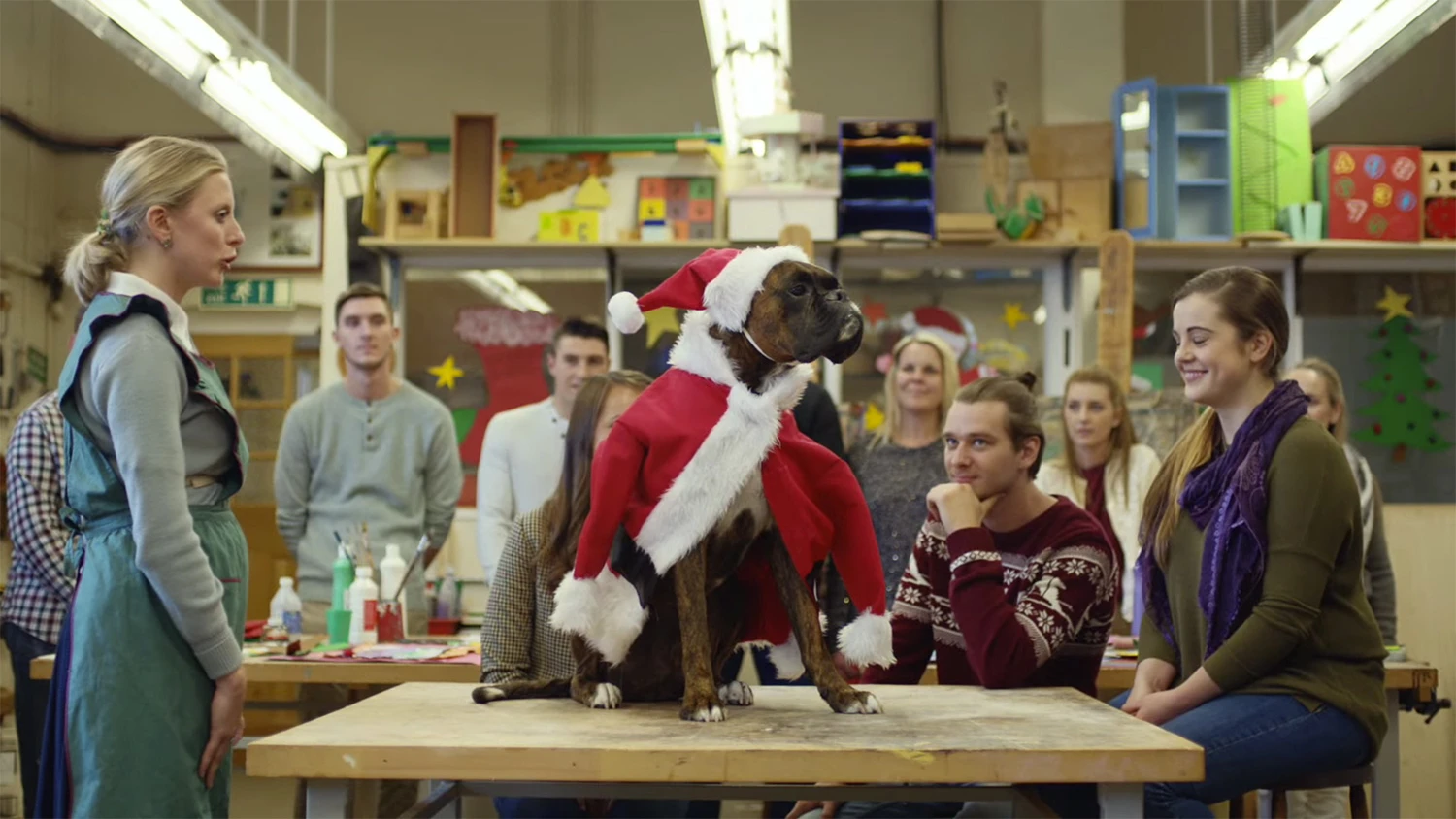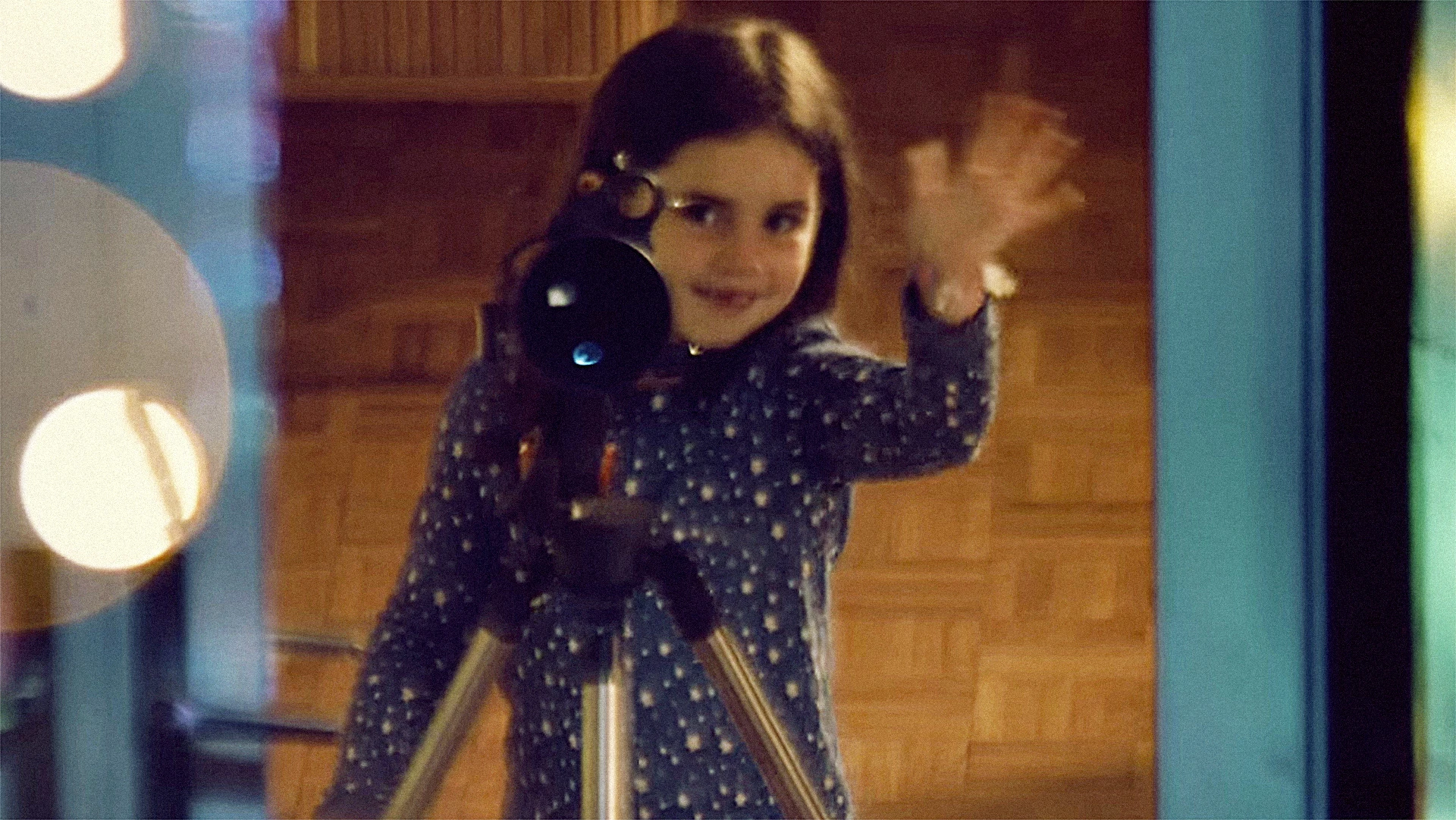For Britons, it begins in early November. The whispers, the anticipation, the predictions, the months of creative and strategic preparation, the millions of marketing dollars spent, the teasers, it’s all led to this. The unveiling of the almighty Christmas ad.
If it all sounds a bit familiar to American ears, it should. Just move the timeline by about three months and replace the word “Christmas” with “Super Bowl,” and you’ve got an idea of what’s become the U.K.’s biggest annual advertising popularity contest. But unlike the Super Bowl, the British Christmas adstravaganza is a relatively new phenomenon, sparked by one retailer that saw an opportunity to make a big holiday splash, that’s now become a race to find out what brand will “win Christmas.”
The brand responsible is retailer John Lewis. The company had been spending big on Christmas ads since at least 2007 but it’s really when it teamed with agency adam&eveDDB in 2009 that the “John Lewis Effect”–in which retailers and brands of all stripes aim to go epic for Christmas–began to form. Adam&eveDDB executive creative director Richard Brim pegs the start of the “Christmas Bowl” at about four years ago. “I can’t quite put my finger on it, but in 2011 after ‘The Long Wait,’ something definitely changed,” says Brim. “Before that there was a lot of celebrity glitz and glamour at Christmas, but it wasn’t such a big deal. ‘The Long Wait,’ with its simple story, captured the the public imagination. It didn’t sell people anything other than the notion of Christmas and thoughtful gifting.”
Since then, the John Lewis ad has become the unofficial launch of Christmas in the U.K. “It’s a part of popular culture in a way that every brand strives to be,” says Brim. “Captivating and effective, without any follow up ads selling turkey crowns or prawn rings (2 for £10.99). Now it’s a yearly race to be the most emotional and meaningful brand of the year. It’s taken on a life of its own.”
Brim should know a thing or two about it. In addition to John Lewis, adam&eveDDB also created the Christmas ads for Waitrose, Mulberry, Harvey Nichols, and more. CoCreate talked to Brim and a few of the other minds behind some of Britain’s best brand creativity to further explain the yuletide phenomenon, where the trend is headed, and more. You can also check out the best of their holiday handiwork in the slideshow above.

Santa’s Super Bowl
Caroline Pay, BBH London deputy executive creative director: “It’s clearly John Lewis’ fault. Making everyone weep into their mince pies and rushing out to buy bears, hares, penguins and telescopes…Rather like hosting Christmas, we tend to spend an inordinate amount of time and effort and money making sure our version of Christmas is extra special. Then we sit and wait for everyone to judge whether we’ve smashed it or not. Plus budgets only go so far in a marketing year, right? The majority of brands playing this game are retailers and Christmas is the big spending moment for them. It’s also a moment when the nation gathers around the TV. It’s become our version of the Superbowl, just with more tinsel.”
Alex Grieve and Adrian Rossi, AMV BBDO executive creative directors: “In the absence of a huge U.K. sporting occasion – ‘The Lord’s England vs Sri Lanka test match ad contest’ just isn’t going to work–Christmas has filled the gap. Also it’s no accident that our ‘Superbowl’ ad bonanza is fueled almost entirely by either Supermarket or High Street retail brands. Given that their financial year is either made or broken by how well they do at Christmas it’s perhaps no surprise that they look to creativity to give them a competitive advantage. Also, everyone is so drunk on eggnog that consumers are more open to big, weepy, emotional ads.”
Mark Waites, Mother London creative chairman: “There have always been big money Christmas ads in the U.K. I remember 30 years ago Woolworths would spunk a whole ton of cash at Christmas with a two-minute ad stacked full of as many celebrities as they could afford. Their work achieved some kind of fame and even a few imitators, but outside the celebs and huge media budget there was very little to write about. In other words the work was dreadful. What has changed is John Lewis.”
“About five years ago, either by accident or design (I’m sure the agency would argue it was all design), they made an ad that tugged at the heartstrings, it fit the mood of Christmas (a great excuse for schmaltz), and they reaped the rewards with the most loved Christmas ad. This is important because until then the ‘most loved Christmas ad’ category didn’t exist. Successful work has always had its imitators and so was the case in this instance. Just like the Super Bowl, other clients wanted in, they also wanted the most loved Christmas ad.”
Neil Godber, JWT London head of planning: “What turned the holiday into an extraordinary ad contest of Super Bowl-like proportions? In a word: sales. Coca-Cola historically associated themselves with Christmas via their Polar Bears and Convoy ads, but the pressure to win at Christmas for retailers, both supermarkets and the wider High Street in the massive pre-post-Christmas sales meant that all retailers required a huge presence in the run up to Christmas. This has led to advertisers making greater efforts both in the level of media spend and the level of creativity around the Christmas period.”
Billy Faithfull, WCRS London creative director: “There’s probably a smarter answer than this, but I think it’s because John Lewis led the way. Of course, advertising often signals the most wonderful time of the year, and we’ve always loved and dreaded the arrival of the Coke trucks ad in equal measure. But until John Lewis started investing, creatively and financially, with their campaigns it was a pretty price-heavy season of selling. Mass appreciation of a more creative, emotive approach based on an idea rather than a price tag led to a kind of advertising arms race, much like the Super Bowl across the pond. The question ‘should we bother with the Christmas Super Bowl?’ appeared on a pitch brief for a big retailer this year. You might put this down to the changing role of TV in the advertising mix. With a richer mix of media from which brands can land the detail, film is finally (again) being recognized as the place where you build brands. John Lewis clearly understood that being loved at Christmas is as good as being remembered and have, by and large, had Christmas sewn up.”
Graeme Douglas, TBWA London executive creative director: “Simply put, us Brits love Christmas. It’s the biggest holiday of the year by some stretch. Coupled with fewer and fewer ‘national moments’ for advertisers to hang on to, Christmas has now established itself as the biggest ‘set piece’ in the advertising calendar simply because it’s our biggest cultural touchstone.”

What Makes A Great Xmas Ad
Waites: “Christmas is about family, expectation, forgiveness, religion, legend, the dirty old town redressed in a blanket of purest snow–take your pick. Christmas even has its own soundtrack.”
Grieve/Rossi: “The short answer is the same as any great ad no matter what time of year it appears: insight, simplicity, originality. Of course you’re not going to go wrong by sprinkling a bit of Christmas sugar over your ad and leveraging things like nostalgia, the feel-good factor and the heartwarming glow of a tale well told. That’s what we tried to do with “Mog’s Christmas Calamity” for Sainsbury’s. But it’s important not to sprinkle too much sugar. That just ends up making everyone feel sick. In stark opposition we employed Jeff Goldblum for Currys PC World to teach the nation how to act in the face of being given terrible presents. They’re both completely different in their tone and approach and yet both completely right.”
Douglas: “There’s no secret formula. The key, I think, is to find the convergent spot between your brand’s tone and the mood of the nation at large. One year, schmultz might work. The next, it could fall flat. It’s almost impossible to predict how it will go.”
Godber: “It’s difficult to pin down the exact ingredients for the perfect Christmas ad, and it will to some extent depend on who you are as a brand. For example, premium and luxury brands can almost afford to ignore Christmas in a show of defiant strength, indicating they don’t need Christmas, Christmas needs them. Alternatively, mainstream brands have on occasion tried to buck the Christmas trend and stand out by showing the darker more distressed side of Christmas, think Waitrose not making a glossy ad, giving their money to charity, or supermarkets showing the stress for mums. But in general, brands need to find their place in the contagious goodwill of Christmas in a way that suits their voice. This year we’ve seen brands playing on the extension of our feelings of social responsibility towards those less advantaged or forgotten in society, think John Lewis reaching out to older people, or Sainsbury’s in their epic Mog the Cat.”
Brim: “The same as the ingredients for any great ad. It’s about making people feel something. We try to get there with a strong story, beautifully told.”
Pay: “It should stop you in your tracks and switch on one of two mega emotions–laughter or tears. Christmas is all about the heart not the head.”
Faithfull: “The fundamental difference between Christmas ads in the U.K. and the Super Bowl in the U.S. is context. We watch the run down of the Super Bowl ads with drooling jealousy at how open the playing field is–most have nothing to do with football. However, given the old adage of the freedom of a tight brief, it does make the creative task all the more rewarding when you nail it despite the self-imposed mandatories. Christmas ads need to make you feel something, something good ideally, but it isn’t always the case. A healthy dose of nostalgia will do wonders. It is Christmas after all. But just like any other time of the year real success is often just doing whatever everyone else isn’t. You don’t have to put Christmas on a pedestal to make entertaining work that’s fit for the festive season. Our Warburtons Giant Crumpets ad featuring The Muppets does not make a single direct reference to Christmas. And it’s all the better for it.”

Ads Of Xmas Yet To Come
Douglas: “We’ll see divergence in approach. Many advertisers are competing for the same territory and it’s starting to wear a little thin. Those that find their niche, stand out, and entertain will win.”
Faithfull: “The trend has been to make ads that draw a lump in the throat and a tear on the cheek. The Christmas formula also insists on ludicrously long time lengths too, to make an event of the first showing of the ad. This has led some ads to be works of art in sentimentality and others to be cheap and mawkish yawn-fests. Contrary to what many people say, if you believe what you read on Twitter the public do love the Christmas Superbowl, but they just want to be entertained. There does seem to be a growing trend towards good old-fashioned entertainment though, which I hope will continue. See the Jeff Goldblum Currys PC World work for an exercise in masterfully entertaining negativity. Outstanding!”
Brim: “The stakes are getting higher, the seasoned brands are resorting to more and more varied ammunition, be that bigger spends and broader media approaches or borrowed interest and retelling of beautiful old stories. This year has also seen a trend to do the anti-christmas Christmas ad along even more of the unexpected brands taking the race by storm than ever. I love that any brand can take part and go from 0 to 100.”
Pay: “We’ve gone from the tearjerker to the agitator. Once John Lewis set the genre, it opened the door for challenger brands. Harvey Nichols is king of this. Their work is edgy, cool, rude. A teenager to John Lewis and Sainsbury’s cosy mum who wants everything to be just so and perfect. Mulberry has the same attitude. You can tell it wants to be different but still play with the big boys. Interesting that John Lewis, Mulberry and Harvey Nichols are all from the same agency (adam&eveDDB).”
Waites: “What’s strange is that the competition only comes from other department stores or supermarkets. If it were really a U.K. Super Bowl, the beer guys, the snack food peddlers, and the dot coms would all want in on the act. Hopefully the Christmas ad will evolve beyond everyone trying to ‘do a John Lewis’ and there are signs that people are trying. For me this year’s Christmas Bowl is being won by the Curry’s ads featuring Jeff Goldblum.”
Grieve/Rossi: “It’s become bigger because it works. The public have a genuine appetite for the razz-ma-tazz of Christmas ads. In a strange way they have come to be seen as the starting gun for the festive season. As to where they are headed, who knows?
For the Sainsbury’s brief we have a simple formula: no formula. It’s why over the past three years we’ve done a 90-minute user-generated content documentary with the Oscar-winning director Kevin McDonald, a historical re-enactment of the Christmas day armistice in the First World War, and this year brought an iconic and beloved children’s book character to the screen. As long as we keep it fresh, we’ll keep it interesting. And as long as we keep it interesting, people will want to keep watching, reading, participating or whatever new and wonderful way the geeks will invent to transmit stories to our brains.”
Recognize your brand’s excellence by applying to this year’s Brands That Matter Awards before the early-rate deadline, May 3.













